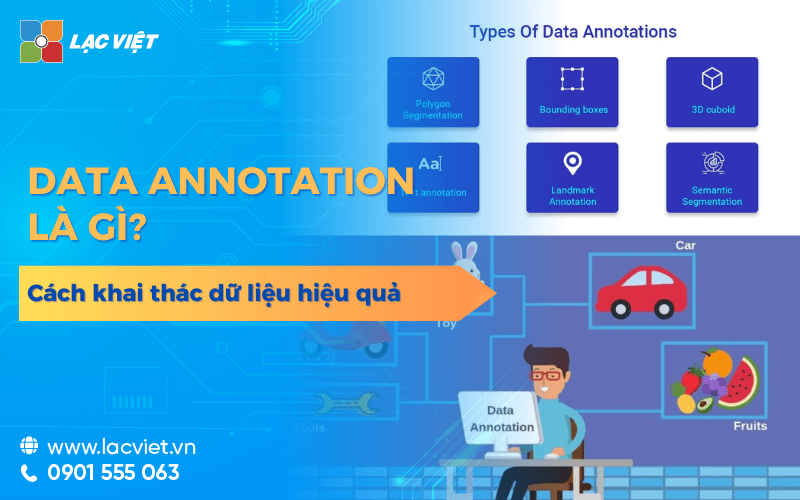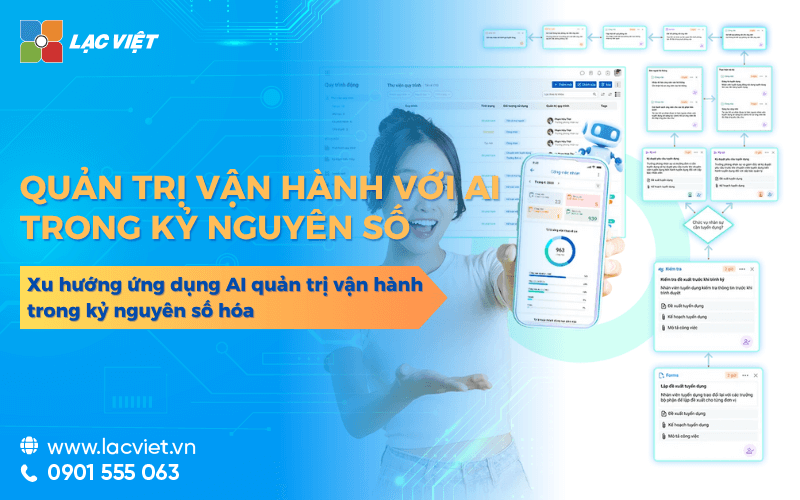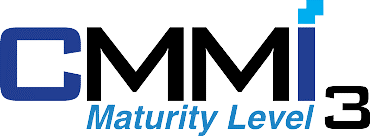In an era where data is known as “new oil field” of the economy of the business day as collected volumes of data from many different sources: sales system, customer feedback, electronic invoice, surveillance camera, email delivery services... However, there are data has not synonymous with value. Fact, a lot of businesses are struggling in the turn available data into specific actions, clear strategy or competitive advantage really.
The cause lies not in lack of tools or technology which is located in the data has not been handled in a way machines can understand. This is when “data annotation”, also known as annotated data becomes a vital element in any project, AI, machine learning or data analysis any meaningful strategy.
This article Lac Viet Computing will help the business understand data annotation, what is to be made as how to bring value what for the organization, the most important is the business can start from now if you want to turn raw data into a strategic asset that can be profitable in the long term.
1. Data Annotation is what?
1.1. Definition
Data annotation aka “annotation” data is the process of label, mark or description in a systematic way up the raw data (such as text, images, audio or video) to the computer can understand and process is what people see, hear or read.
Said simply, as if human can look at a bill and to know where is the company name, amount, tax code... then with the machine, the inscription that is just the set of characters without the specific instructions. The process of data annotation is the way human transmission of knowledge for the machine, via the template, mark the part which what is for the system to learn.
In essence, raw data (raw data) like goods has not classified: image't know what's in that text't know what are you talking about, sound clips unclear who tell me who is. If not labeled, system, machine learning can't “learn” the right is like putting a student take the exam that hasn't been training problem. Data annotation is the process of “teaching machines to understand data,” from which new can train the models WHO are in high quality.
For example illustrated easy to understand:
- With a picture containing several objects, people will circle and label “car”, “the walk”, “trees”... This is image annotation (label the pictures).
- With an electronic invoice you label the “company name”, “total amount”, “invoice number”, “tax code”... to serve the AI system handles stock from. This is a text annotation (label text).
- With a recording, you attach the label “male voice”, “voice”, “product name referred to”... to serve virtual assistant or system call analysis.
1.2. The goal of data annotation in business
In the context of AI and machine learning increasingly be applied deep into all areas from sales, customer care, financial – accounting, logistics, then the data annotation is the foundation for the intelligent system works exactly effective.
The main goal of data annotation include:
- Help learning machine “understand” data: label is the way to “train” the system to distinguish between important information and not important, between people with and between name-product with description.
- Increase the accuracy of the pattern AI: If you want to chatbot right answer, OCR read true bill or software product suggestions standards, then the training data should be labeled sufficiently accurate.
- Create competitive advantage of private data: enterprises can take advantage of the commissioning data (invoices, contracts, emails, text messages, photos, products...) to build the AI system in accordance with the peculiarities business. Here's how to not depend on the general solution from the outside.
- Automation of manual processes consuming resources: Instead of entering data manually from the bill, email or vouchers, data is attached labels will help make replacement human, faster, more accurate, cost savings long-term.
Practical value that the business received:
- Cut the processing time of large data such as invoices, orders, email clients.
- Improve the efficiency of the system from the chatbot, behavior analysis to the classification of financial risks.
- Easily manage database structure, serves the analysis of a decision quickly.
In summary, if the data is “fuel” for artificial intelligence, the data annotation is the filter stage – refined – shaped to turn raw fuel into real value. This step is indispensable if the business wants to harness data to a proactive strategy.
2. Types of data annotation popular and practical application in business
The process of annotation data not happen the same with all data types. Depending on the nature of input data as text, images, video or audio that businesses will need to apply form labeled accordingly. Here are 4 types of data annotation popular, accompanied by application examples specific to business easy to visualize values that each type brings in practice.
2.1. Annotation text (Text Annotation)
Text annotation is the process of label, or mark the important elements in the text help the system understand the content, feelings, or intentions hidden behind words. Common forms include:
- Label entity (Entity Recognition): name, company, location, products
- Label emotions: positive, negative, neutral
- Classified theme or intention: a complaint, feedback, order, advice...
Practical application:
- Chatbot business: label the intention of the user in question to the chatbot answer their needs (for example: “I want to invoice” → → intention: order processing).
- Analyze customer feedback: Businesses collect thousands of feedback from the survey or a comment on social networks. Label emotions and themes help identify hot issues that need improvement.
- Classification of the content of the contract invoice: In finance – accounting, text annotation support WHO recognize the main part in stock from as amount, tax rate, duration of the effect.
Values bring: save time reading the text manually, increase the accuracy in processing natural language (NLP), construction support assistant number, report analysis automation.
2.2. Annotation images (Image Annotation)
Image annotation is the identification of the labeled objects in the image, often through techniques such as:
- Bounding box: drawing frames rectangle around the objects
- Segmentation: mark correct each pixel belonging to the object
- Keypoint: mark the characteristic points (for example, joints, knees, eyes, nose...)
Practical application:
- Production, quality inspection, product: label position error, cracks, wrong size in product image to AI to detect every error.
- Factory security office: Recognize the warning object through the camera.
- System identification digitized documents: Attach the signature, seal, tax code on image scan to OCR system processing accuracy.
Values bring: advanced automation capabilities in monitoring, support to check the product quality, shorten processing time, material physics.
2.3. Annotation videos
Video annotation is the process of attaching labels of moving objects or behavior occur in videos usually at the level of the frame (frame-by-frame). Can be combined bounding box, keypoint or description of the action.
Practical application:
- Plant operator production: Detect incorrect behavior process (for example: not wearing a helmet, standing in the wrong position).
- Security monitoring: label to the AI system identification, the strange, unusual behavior or warning penetrate beyond the hours.
- Model train AI in logistics: identify media manipulation, loading and unloading of freight, in the bus station, storage and transit.
Value yield: optimal operation, surveillance camera, discount depends on the person, improving the safety and quality of internal processes.
2.4. Annotation audio (Audio Annotation)
Annotation audio is the label the sound clips to distinguish people say, keyword, sound or emotion in the voice. Popular in the field of total stations, analysis, call customer care.
Practical application:
- Tổng đài CSKH: label feelings, keywords (for example: “claim”, “cancel”, “slow delivery”) to evaluate the quality of service, staff training.
- System virtual assistant: Helps ONE understand voice user and respond accordingly.
- Analyze call quality: distinguish many people say the same to the recording, identify the English background to eliminate interference.
Increased accuracy for the solution voice WHO supported the monitoring of quality customer service, shorten the processing time feedback.
Choosing the type of data annotation matching math business not only help build models WHO exactly, but also significantly save time, cost and personnel in operating daily. Businesses do not need to do all that need to determine where is data form the words that apply form labeled the most effective.
3. Why data annotation with important business in the era of AI?
3.1. Data quality determines the accuracy of the model
In any AI system or solution, machine learning, and how the quality of input data is a prerequisite decided to head out. A pattern though strong, where to go, nor able to generate reliable results if the training data is defective, missing the label correctly, or does not reflect actual operation of the business.
A statistic is more recognized experts show: about 70-80% of the duration of a project, ONE fact is for the processing of labeled data, i.e. the majority of effort is not put into the model building, which is to ensure the data can be “understanding”.
In the field of accounting – financial, if you build an AI system to automatically identify information from bill (OCR), but the label is in the wrong, such as “invoice Number” is confused with “transaction Code” or “Date of invoice” that is, a mistake is “payment Date”, the system will continuously handle false, entail serious consequences of books, reports, tax compliance.
The serious investment in data annotation not only help the AI system learn more accuracy but also significantly reduce the cost of errors, operational risk in implementation practice.
3.2. Tap the right data, accelerate operational efficiency
No little business being in possession of “treasure” internal data such as invoices, contracts, orders, transaction history, customer, email exchange... but you can't harness the efficient because the data is not structured, not labelled or not be integrated into the AI system.
When data are annotated properly, businesses can:
- Automatic classification invoice, extract information into accounting up 80% of the time to enter data manually.
- Coaching model analysis of customer behavior fit particular business help personalize product suggestions or customer classification according to the value life cycle.
- Development chatbot internal intelligence can understand the process peculiarities, language internal and handle business requirements for more accurate solutions AI general.
This is the competitive advantage from the inside, to help businesses accelerate in automation – without sacrificing the accuracy or particular industry.
4. The challenges businesses encounter when deploying data annotation
4.1. Lack of manpower understand professional combined technology
One of the biggest obstacles that businesses deploy annotation not yet effective is the lack of team that can understand both languages: the language services and language technology.
For example, to label accounting data, the mount must know:
- “Total before tax” what are the differences between “value billing”
- Each indicator on the invoice, balance sheet, statements of cash flows have what role
- The variation about the presentation of data in each sector (manufacturing, service, export-import...)
The outsource team labeled not have the professional knowledge very easily lead to the wrong label extreme risk in the model processing financial data. At the same time, internal recruiters to “label the craft” back in time consuming resources if there is no tool support.
4.2. Volume and processing speed problem is not small
Input data for ONE do not stop in a few hundred lines. For a model bill analysis or analyze customer behavior, you need from thousands to millions of lines of data are annotated, accurate, fast sync.
The challenge is:
- How to label a large amount of data without losing the whole month?
- How do to each label compliance standards?
- How to check quality labels in a systematic way?
If businesses do not have the tools annotation dedicated the entire project ANYONE can suffer from stagnation, exceeding the budget or fail due to data not standard.
Data annotation is a mandatory step if businesses want to deploy ONE or solutions data mining advanced. However, the quality and speed of this process depends entirely on the processes and resources that business investment.
The identification of the right challenge to build strategic deployment annotation, it will decide whether the business has transformed data into the property or not. This is the difference between these units go ahead in digital transformation, and the rest.
5. Business should be where to start with data annotation?
Though already well aware of the importance of data annotation, many businesses still perplexed question: should start from where, how, and need, and what resources to deploy effective? Here are three steps starting essential to help businesses build route annotation, it feasible optimal cost.
5.1. Define clear objectives of the project WHO
Before embarking on annotated data, businesses need to clearly answer the question: WHO will be used to solve problems in your organization?
Identifying the right target not only help to select the types of data appropriate to label, but also avoid the waste of resources for the payment does not create real value.
Hint specifying goals in career services:
- Automatically handle accounting vouchers: WHO needs to learn how recognize the important indicator in bills, receipts, financial statements. The required data annotation: photo scan, PDF file structure.
- Improve the quality of care customers: The goal is to build chatbot properly understand the questions, analyzing emotions in feedback. Data need label: conversation, email, content call.
- Forecast customer behavior: label the behavior in the chain interact to learning system decision model, as the proportion of leave, the ability to buy back. Original data: transaction history, behaviour on our website, CRM.
Benefits when determining goals clear:
- To quantify the volume of data required annotation
- Priority right kind of data is valuable coaching highest
- Optimal resources (personnel, tools, time) in the right direction
5.2. Choose tools annotation fit
When identified the problem and the types of data to label, businesses will need tools to support the process of annotation, quick, consistent, easy to control quality.
Some of the popular tools in groups features:
| Tool name | Main advantages | Matching data types |
| Label Studio | Open source, easy-to-customize, support multiple data formats | Text, image, audio |
| Prodigy | Fast interface, has integrated NLP model to automatic suggestions | NLP, chatbot feedback |
| SuperAnnotate | Support team collaboration, progress management and rating label | Images, videos and segments |
| Amazon SageMaker Ground Truth | Auto suggestions labels, integrated well for ONE business | Big project, big volume |
Selection criteria should be based on:
- The ability to integrate with system internal data (CRM, ERP, server storage)
- The ability to decentralize the label, moderators
- Features automatic hints in order to reduce the time to manipulate craft
- The level of ease of use for staff not professional, IT
Additional hint: If you only do small retail business can get started with Google Sheets + instructions label can cross-check and then upgrade later when you see obvious effect.
5.3. Team building annotation internal or outsourced, can control
One of the important decisions that should be labeled internal or outsource? Each option has advantages and disadvantages.
Case should team building internal:
- Data security (financial statements, contracts, customer data).
- Business requirements need people who understand the deep industry accounting – finance – legal.
- Want to control the quality and develop internal capacity.
How to implement:
- Recruit or assign people have understanding about related services (accounting, internal controls, CUSTOMER service)
- Training rules annotation system, there are inspection checklist
- Subtypes: the label – the price tag – the data management
Case should outsource (outsource):
- The volume of big data does not require understanding of the content (example: photo, product photo camera monitoring)
- Want to shorten deployment time original
- Can use the supplier have a process to check the quality 3-layer
Important note: Whether outsourced or internal need to build a documentation annotation details, and setup process quality control (QA/QC) to ensure accuracy at least 95% before put into training AI.
Deploy data annotation not have to start from the technology but from understanding your business goals. Knowing what I need, business will be easy to pick the right tools, organization, process, label, optimum, time-saving resources but still ensure the quality of input data to harness the maximum power of business data in the era of AI.














